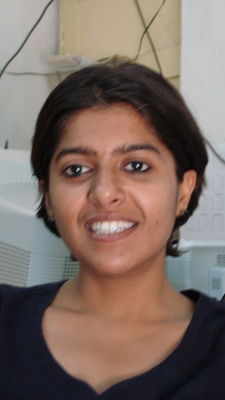|

Born in 1977 received her M.F.A (Sculpture), and B.F.A (Painting),
from the Faculty of Fine Arts, Maharaja Sayajirao University of
Baroda. She is the recipient of Emerging Artist Award, presented by
Foundation for Indian Contemporary Art (FICA) 2007, Vadehra Art
Gallery, New Delhi. Rakhi received the Inlaks Scholarship for the
UNIDEE in residence at Cittadellarte, Fondazione Pistoletto in 2006.
Her recent solo exhibitions include Matters Under the Skin, Art HK –
Asia One represented by The Guild, Mumbai, Hongkong; Intertwinings,
Vadehra Art Gallery, New Delhi and Sonnet for Silent Machines,
at Jehangir Nicholson Gallery & The Guild, Mumbai. Rakhi has
participated in several major exhibitions including
Art Stage Singapore 2011 presented by The Guild, Mumbai;
India Art Summit 2011 presented by The Guild, Mumbai; Notes on
the Disappearance of the Real,
Shrine Empire Gallery, New Delhi; Reverie, Chemould Prescott
Road, Mumbai; I think therefore graffiti…, The Guild, Mumbai;
Bring Me A Lion: An Exhibition of Contemporary Indian Art, The
Hunt Gallery, St.Louis, Missouri; Sculpture, The Guild, Mumbai;
A New Vanguard: Trends in Contemporary Indian Art,
Saffronart, New York; The Guild,
New York; Analytical Engine, Bose Pacia, Kolkata; Gallery
Seven Art Ltd, New Delhi; The Ego, The Persona, The Shadow
and The Wise Old Man (or was it The Great Mother?)', The Guild,
New York; Through a Glass, Darkly; Reflections on the Self Portrait,
The Guild, Mumbai; Inner Vision, The Guild, New York.
Rakhi Peswani was trained as a painter first and then completed her post
graduation with sculpture as major. Her current art practice, quite
interestingly, is a conflation of characters from both, the
pliancy of paints and the procedural strength of modeling. Rakhi has
been working with evidently a club of flexible mediums like cloth
(various kinds), needle and thread, armatures, wooden frames/shelf and
so on. Her selection of materials involve a conscious effort in
understanding the same, their origins, their relation to a particular
culture/s and therefore the utilitarian purpose of their being within a
certain context.
Her point of departure is to locate a visual / verbal / tangible
language that blends the local character of our system and the
global character of verbal language. The possible dual responsibility of
a language allows her to articulate some of the present identities of an
artist working within contemporary realities. She further layers this
juxtaposition with the inclusion of verbal text, fabricating discreet
ironies within the material processes to depict contemporary identities.
Rakhi titles her works with equal sensitivity with which she models her
works. Her occupation with the former (i.e. naming the work) stems out
of a semi-permanent process of conceiving a word or any linguistic unit
by visualizing its nearest form through an image, and then executing
the same with absolute equilibrated prowess. It seems that her system
of logic follows; that
visual representations can
be instrumental in clarifying complex arguments, and thus visual plays
an important role in cognition. She understands it well and uses the
tools to her benefit by creating a seamless grapheme of word and image.
To all cerebral individuals ‘words’ play a very important role in
expressing nonobjective units or ideas. Rakhi has noticed that important
locus between conveying and inferring through her stitched narratives.
Her engagement with
materials roots deep down to her social, cultural and intellectual
being, therefore it is not just the image of the work that speaks on her
behalf, but it is also the material which completes the chronicle.
She is as much figurative
as rational in her approach towards image conjecture. A visual artist is
supposed to be susceptible to as many artistic expressions as possible,
since the act of conveying abstract concepts requires incisive
imagination and voice. Rakhi’s works are paronomasia in themselves,
because they are often images of words or phrases like ‘Reflection’ or
‘Every stitch is also a trick’ either modeled, stitched or installed.
Call them apologues or admonitory indications of philosophical
suspirations, but they all are sharply minimal and therefore suggestive,
leaving lots of space for the viewer to contemplate and visualize the
unuttered. Her perception about the far and widely stretched visual
world is reasonably conservative in nature (in a positive sense). It
appears as if, over-exposure of a creative soul to the never-ending
process of image and meaning generation almost to a level of fatigue has
intrigued her to reply impertinently with her eloquently designed and
restrained usage of imagery, similar to the subtle but effective purpose
of words in a haiku.
She is currently living and working in Hyderabad. |
|
|
|